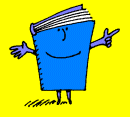FEATURE |
TRADITIONAL NARRATIVE TEXTS |
HYPERTEXT FICTION |
EXPLANATION IN TERMS OF SIMILARITIES AND DIFFERENCES |
Author |
Usually one author |
Reader as co-author |
In our Alice story, the reader (assuming the role of Alice) makes constant choices that dictate what will happen next. Alice meets either Tweedle Dee and Tweedle Dum or the Chesire Cat depending on author choice. |
Plot |
Usually linear, following story structure, one thing after another |
Postmodern text—most often not a linear plot. Choices and links provide multiple paths. |
In the Alice story, there are various decision points in the story, which offer the co-author a different plot path for multiple readings of the story. |
Point of View |
Often first or third. |
Often second person |
In the story "you" are Alice, making choices that affect your ultimate storyline. In addition, we created Alice falling from the perspective of looking down the rabbit hole. This is meant to bring the reader into the image as he or she is also falling. The text for this page reads “Oh Alice! Now you're falling down a deep hole, spiraling out of control. You try to grab things along the way, but it's just no use. Will you ever stop falling?” |
Ending |
Usually a conclusion or a sense of closure |
Multiple endings. Sometimes “neverending.” |
In our Alice and Wonderland story, the reader experienced different parts of the story based upon his or her decisions. All of the characters cannot be met in one story, nor can every part of the story be experienced in one reading. Therefore, the reader may choose to experience the story again and try new and different options. The Alice and Wonderland story ends with Alice waking up, realizing she was daydreaming in class. The last sentence is a hyperlink that reads, “Do you dare to begin again?” If the reader clicks this hyperlink, the story returns to the beginning screen. |
Setting |
Mostly in single place and time, except for time travel, flashbacks and multiple viewpoints. |
Multiple settings due to choices to move within text: forward, backward, different storylines. |
In a screenshot of the garden, users may design by dragging and placing different elements. This screen can be secretly accessed in the story and is separate from the plot. It is a side attraction that temporarily places the reader into another scene in another place. When the reader is reader, he or she can exit the garden and return to the story. Although this screen is somewhat limited, it serves as a simple example of allowing users to design part of the story according to his or her visual ideas. With screens such as these, students can engage in metalevel thinking, while they make visual meanings. |
Publication |
Hard copy
|
CD Rom, video game-like, Ebooks, online |
We published our Alice story both online and burned it onto a CD for presentations at conferences. |
Media |
Words and sometimes pictures.
Some have sound and pop-ups |
Multiple media can be present, including sound, video, writing tools, and motion. |
We employed movement in the form of gifs and Easter Eggs created through the use of javascript. Although we did not include sound, video or writing tools, these options would allow for many interesting educational applications. |
Medium |
Paper |
Digital: virtual or CD/DVD |
This site could easily be accessed through the World Wide Web. In addition, we created a CD copy. |
Reading |
Usually once |
Many paths lead to multiple reading |
The Alice story could be read many times, in many ways, depending on the choices made at decision points. |
Author-Reader |
Author decides reader’s path through text |
Reader has some autonomy in choosing path through text. |
Because Alice is a character-driven story, the character is fully developed and the reader is acting on her behalf, animating the character, projecting his own decision-making onto the choices made by Alice |
|
Readers cannot change the text. |
Some stories allow readers to change or add to text. |
In Alice in Wonderland, the player enters a story world populated by many characters, permitting many different interactions and experiences. Although in this particular situation, the reader couldn't change or add to text, this component could be added. |



